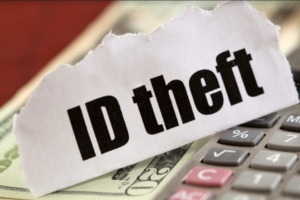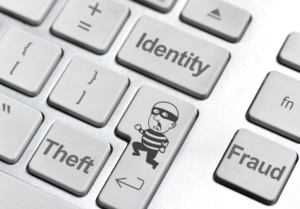Is the Term “ID Theft Protection” a Lie?
If you work for an IT security company, especially in the marketing department, listen up: the phrase “Identity theft protection” is definitely way overused and sometimes abused as a term for marketing. We know that this term is used to sell products and services, but do all products and services that weave in the term ID theft protection really protect people from ID theft? No. Definitely not.
 There is really no difference than labeling a food product as being “natural,” even though it is not “organic.” In the best case, the info is incorrect, and at the worst, it is miss leading and an outright lie.
There is really no difference than labeling a food product as being “natural,” even though it is not “organic.” In the best case, the info is incorrect, and at the worst, it is miss leading and an outright lie.
Any business with any type of security solution claims that it can protect people’s identities. However, firewalls do not protect anyone from getting their identity taken. The same lie is told when a company marketing a thumb drives that’s encrypted, antivirus software, or even alerts for phishing scams. While all these things may help or assist and even facilitate at some level the process of protecting an identity, they are not ID theft protection. They just aren’t.
Only services that truly monitor your identity should call themselves ID theft protection services. They do this by checking up on your credit, and then scanning the internet for any type of sensitive information. These companies also look for things like you Social Security number online, and if there is a problem, they can help you fix it. And there is generally an insurance component that works towards fixing or reimbursing funds lost as a result of stolen identities.
If you currently have ID theft protection, you may get an email that looks similar to this every month:
We have been checking your credit reports from Experian, TransUnion, and Equifax, and we are happy to let you know that we did not notice any new activity. As a user of our services, we will continue to check your credit report every day for your protection. We help to protect you from any financial hassles and losses that could lead to identity theft. You can log into our website and review your status 24/7. Please click here and enter your username and password to get started. As always, our team is ready to help if you notice any suspicious activity.
This is exactly what you should expect when you choose to get ID theft protection. Do not fall for any type of fancy marketing terms. This is what ID theft protection should include:
- Alerts: This is a warning system that notifies you when your personal info might be at risk
- Monitoring: Constantly monitoring your privacy, identity, and credit information
- Recovery: Experts help should your identity be compromised. They should offer 24/7 recovery service to take care of calls, paperwork, and other details.
Make sure that you are doing your research and don’t believe what you read. Instead, take the time to really understand what you are spending your money on.
ROBERT SICILIANO CSP, is a #1 Best Selling Amazon author, CEO of CreditParent.com, the architect of the CSI Protection certification; a Cyber Social and Identity and Personal Protection security awareness training program.

 Innovis Credit Freeze
Innovis Credit Freeze The man arrested is Gary Hartman, and he is accused of killing and raping 12-year old Michella Welch. Donald Ramsdell, the Tacoma Police Chief, has said that computer modeling, police techniques, and advances in DNA identification has led his team to arresting Hartman on June 20th.
The man arrested is Gary Hartman, and he is accused of killing and raping 12-year old Michella Welch. Donald Ramsdell, the Tacoma Police Chief, has said that computer modeling, police techniques, and advances in DNA identification has led his team to arresting Hartman on June 20th. The study also showed a shift in how ID theft fraud was being done. Credit card accounts were the most common targets for new account fraud, we also see that there is a big uptick in other accounts being targeted, including PayPal accounts and e-commerce merchant accounts. We can also see that more than 30% of consumers in the US were notified that their information was part of a data breach, which is 12% higher than the year before. Social Security numbers also seem to be a favorite of ID thieves, as are credit card numbers. We also see that due to these breaches, consumers are becoming less trusting when it comes to companies and financial institutions that are storing personal data.
The study also showed a shift in how ID theft fraud was being done. Credit card accounts were the most common targets for new account fraud, we also see that there is a big uptick in other accounts being targeted, including PayPal accounts and e-commerce merchant accounts. We can also see that more than 30% of consumers in the US were notified that their information was part of a data breach, which is 12% higher than the year before. Social Security numbers also seem to be a favorite of ID thieves, as are credit card numbers. We also see that due to these breaches, consumers are becoming less trusting when it comes to companies and financial institutions that are storing personal data. This is no different than labeling a food as “natural,” even though it is not actually “organic.” At best, this is incorrect information. At worst, it’s a total lie.
This is no different than labeling a food as “natural,” even though it is not actually “organic.” At best, this is incorrect information. At worst, it’s a total lie.




























